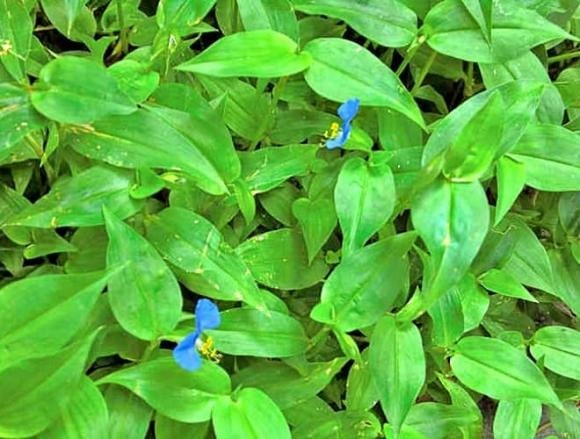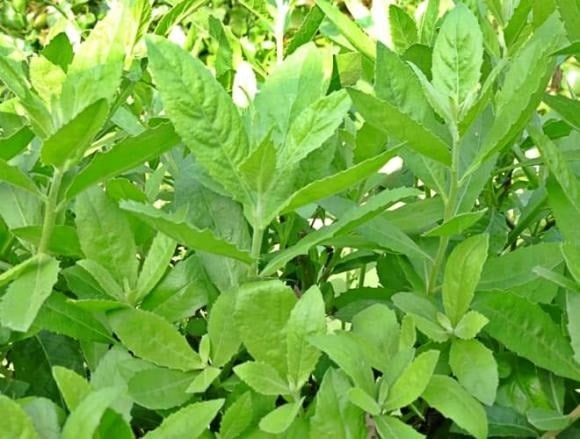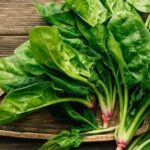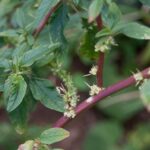“Undervalued medicinal herbs in Vietnam” – this saying highlights the wasteful attitude towards the valuable medicinal resources readily available in daily life.
Numerous wild-growing plants, often mistaken for weeds, are actually potent medicinal herbs offering a plethora of health benefits. According to traditional medicine experts, certain wild vegetables, when used appropriately, can serve as precious remedies beyond their nutritional value.
Below are three types of roadside greens recommended by renowned herbalist Bui Dac Sang for incorporation into daily meals or traditional remedies.
1. Spilanthes acmella (Paracress) – A valuable medicinal herb growing wild by the roadside
During spring, Spilanthes acmella flourishes, showcasing vibrant green foliage. Instead of being discarded, its tender parts are now utilized in rustic yet nourishing dishes, and its perceived worthlessness is transformed into a valuable medicinal resource.
Spilanthes acmella, known by various names such as single-head herb, coat-button, and devil’s-needle, possesses a bitter taste and a neutral nature, according to traditional medicine beliefs. It is believed to possess cooling, detoxifying, wind-dispelling, and blood-activating properties, aiding in the dissipation of blood stasis. Almost all parts of the plant (except the roots) can be harnessed for medicinal purposes.
Spilanthes acmella finds application in treating ailments such as sore throat, respiratory infections, hepatitis, stomach aches, bone and joint pain, and even malaria. Besides its high regard in traditional medicine, modern research has uncovered the presence of beneficial compounds like flavonoids and polyynes, which contribute to its antibacterial, antifungal, antioxidant, and potential anti-cancer and anti-diabetic effects.
However, when using Spilanthes acmella for therapeutic purposes, it is essential to adhere to appropriate dosages and seek expert medical advice before considering long-term use.
2. Bryophyllum pinnatum (Life plant) – An unassuming green with hidden medicinal virtues
Bryophyllum pinnatum, commonly known as life plant or air-plant, is a wild-growing species found in moist areas, often removed due to its perceived low economic value. Yet, unbeknownst to many, it is both a nutritious vegetable and a medicinal herb.
The young leaves and shoots of Bryophyllum pinnatum can be boiled or cooked into a refreshing soup, imparting a subtle sweetness. In traditional medicine, it is believed to possess a slightly cold nature and a mild sweet flavor. It is reputed for its cooling, diuretic, anti-inflammatory, and anti-swelling properties. This plant is often employed in remedies for treating ailments such as colds, sore throat, tonsillitis, and urinary tract infections.

In folk medicine, it is also used topically to treat inflammatory skin conditions, swollen joints, and envenomation from insect or scorpion bites. A typical dosage involves decocting 30-40 grams of the fresh or dried plant into a drinkable infusion.
Modern research has revealed the presence of valuable phytochemicals in Bryophyllum pinnatum, including α-glucosidase (which aids in lowering blood sugar levels), acid p-hydroxycinnamic (an antibacterial agent), and D-mannitol (a cough-relieving compound). Additionally, it contains protein, lipids, cellulose, and natural pigments like delphin and flavocommelin.
However, due to its cold nature, Bryophyllum pinnatum may not be suitable for individuals with weak spleen and stomach functions who are prone to abdominal coldness. Caution should be exercised regarding dosage and individual physical conditions when consuming this herb.
3. Eupatorium odoratum (Peppermint herb) – A precious medicinal herb in Vietnamese gardens
Eupatorium odoratum, a familiar plant in many Vietnamese villages, is often cultivated as a fence or for shade. Unbeknownst to many, this unassuming plant doubles as a nutritious vegetable and a valuable medicinal herb. It goes by several names, including Eupatorium fortunei, bigleaf Eupatorium, and Chinese ageratum.
In traditional medicine, Eupatorium odoratum is believed to possess a bitter taste and a cooling nature, primarily influencing the lung and kidney meridians. It is employed in treating ailments such as colds, fever, indigestion, difficult urination, and bone and joint pain. Additionally, it helps alleviate stress and fatigue.

Modern scientific research has validated the remarkable benefits of Eupatorium odoratum. The essential oil derived from its leaves contains compounds like camphor, borneol, limonene, and cineole, exhibiting strong antibacterial and antifungal properties, especially against strains such as Candida albicans, E. coli, and Staphylococcus aureus. Furthermore, compounds in the roots have been found to inhibit joint inflammation and help manage diabetes, while others neutralize snake venom.
Despite its medicinal value, caution is advised when using Eupatorium odoratum. It is recommended to consult a physician before consumption to avoid potential side effects or interference with other medications.
The Ultimate ‘Natural Cleanse’: Two Fruits from Vietnam with Minimal Pesticides, Delicious Taste, and Nutritional Benefits Worth Discovering
Uncover the two ‘treasures’ grown in Vietnamese gardens, renowned for their cultivation process that almost eliminates the need for pesticides. Not only do they boast delicious, naturally sweet flavors, but they are also packed with essential nutrients, offering a bountiful supply of goodness for your body.
The Humble Vegetable: A Nutritional Powerhouse Praised by American Experts.
With an exceptionally high iron content that surpasses even beef, this vegetable is being hailed as the new “king of blood enrichment.” Its impressive nutritional profile, packed with essential vitamins and minerals, makes it an unparalleled choice for those seeking to fortify their health and enhance their overall well-being.
“Not Just Any Old Dock: Uncovering the Hidden Gold Beneath the Leaves”
Have you ever imagined that the roots of a wild vegetable growing in your backyard could bring farmers millions of dong per kilo? Amaranth, a humble vegetable reminiscent of many people’s childhood, has now surprisingly gained a new lease of life thanks to its roots, a part often overlooked in the past.



































